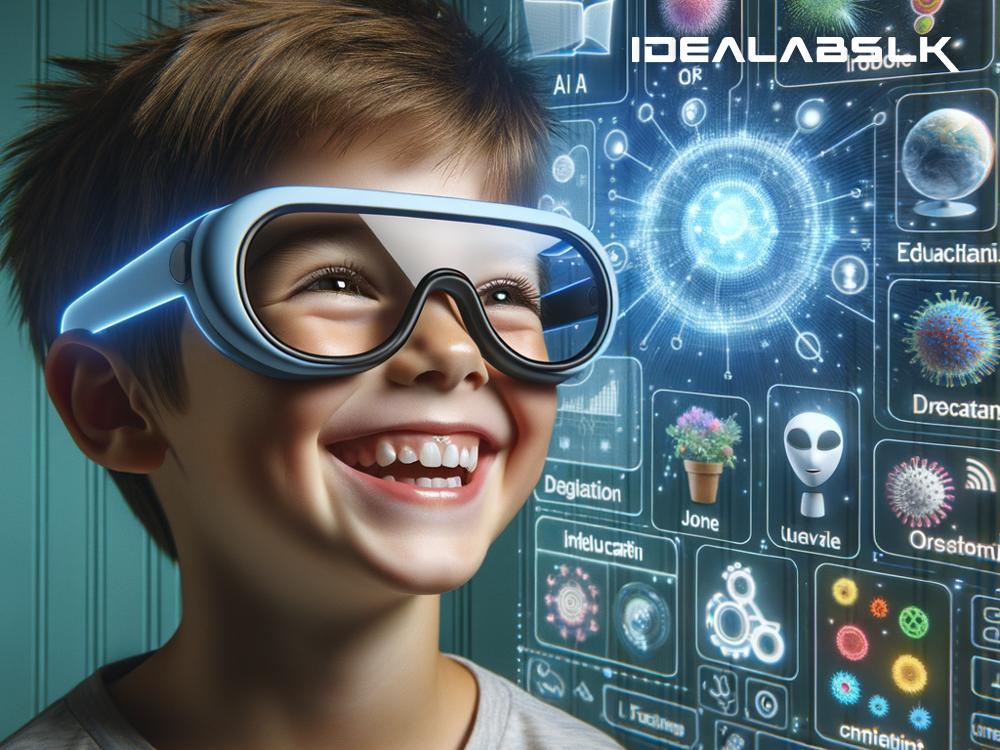AI in Wearable Tech for Adaptive Learning in Kids: A Game-Changer in Education
Technology is evolving at a blistering pace, weaving itself into the fabric of our daily lives and offering new ways to enhance learning for children. One of the most exciting intersections of this evolution is the use of AI (Artificial Intelligence) in wearable technology for adaptive learning in kids. This fusion promises to revolutionize how children learn by making the process more personalized, interactive, and, most importantly, fun. Let’s explore how AI in wearable tech is shaping the future of adaptive learning for kids.
Understanding Adaptive Learning
Adaptive learning is a teaching method tailored to the unique needs of each learner. It adjusts the pace, level, and style of teaching based on the learner's responses and performance. Imagine a classroom where every child gets individual attention, with lessons designed just for them. That's the power of adaptive learning.
The Role of AI in Adaptive Learning
AI acts as the brain behind adaptive learning. It analyzes data from learners’ interactions, predicts their needs, and personalizes the learning material accordingly. AI can identify patterns and learning habits, making it possible to customize the education experience like never before.
Wearable Tech: Bringing AI to Kids
Wearable technology for kids, such as smartwatches, fitness trackers, and even smart clothing, opens a new chapter in interactive learning. These devices are not only cool and fun but are equipped with sensors and software powered by AI, which makes personalized learning a part of the child's daily routine.
How AI in Wearables Makes Learning Adaptive for Kids
-
Real-Time Feedback: Imagine smartwatches that give kids instant feedback on their tasks. This immediate response helps children correct mistakes on the spot, enhancing learning through trial and error, akin to a personal tutor's guidance.
-
Customized Learning Paths: AI in wearables can track a child's progress and adjust learning paths accordingly. If a child excels in math but struggles with reading, the wearable tech can suggest more reading activities while keeping the math challenges at a comfortable level of difficulty.
-
Interactive Learning Experiences: Wearable tech allows for gamification of learning, where educational tasks are turned into fun games. This is incredibly effective in keeping kids engaged and motivated. AI can adapt these games to become more challenging as the child progresses, ensuring that they are always learning at the edge of their abilities.
-
Monitoring Physical and Mental Health: Wearables can also monitor children's physical activity and stress levels, offering insights into how these factors might affect their learning. For example, if a child is not getting enough sleep, the AI can adjust the learning schedule to allow for more rest or suggest lighter, less stressful activities.
-
Enhancing Social Skills: Some wearables are designed to encourage social interaction, pairing with devices of peers to complete shared tasks or challenges. This fosters teamwork and communication skills, making learning a collaborative and enjoyable experience.
The Future of AI in Wearable Tech for Kids
The potential of AI in wearable technology for adaptive learning in kids is immense. We are just scratching the surface of what can be achieved. As technology advances, we can expect wearables to become even more sophisticated, offering deeper insights and more personalized learning experiences.
Embracing the Change with Caution
While the benefits are plentiful, it's essential to navigate this new territory with care. Privacy and data security are paramount, especially when it involves children. Parents, educators, and tech developers must work together to ensure that these technologies are safe, secure, and used in the best interests of children’s development.
Conclusion
AI in wearable technology for adaptive learning represents a significant leap forward in education. It personalizes learning in a way that was once thought impossible, making education more accessible, enjoyable, and tailored to each child's needs and preferences. As we venture further into this exciting realm, we have an opportunity to redefine what learning looks like for future generations. The key will be to balance innovation with safety, ensuring these advancements serve to enhance children's learning experiences without compromising their well-being. The future of education is on our wrists, in our clothes, and part of our daily lives—intertwined with the incredible potential of AI. Let’s embrace it responsibly and watch our children thrive in ways we could have only imagined.

